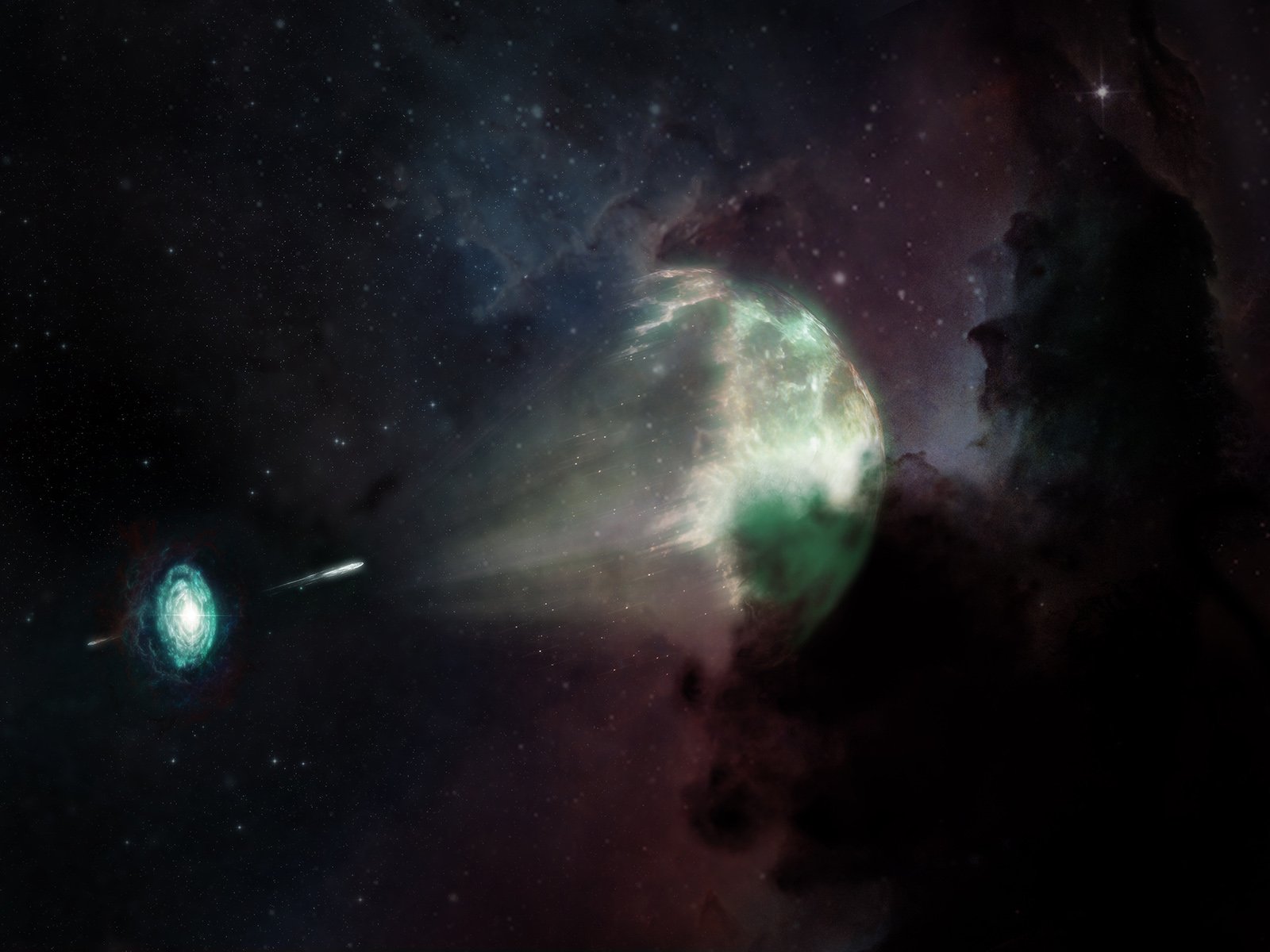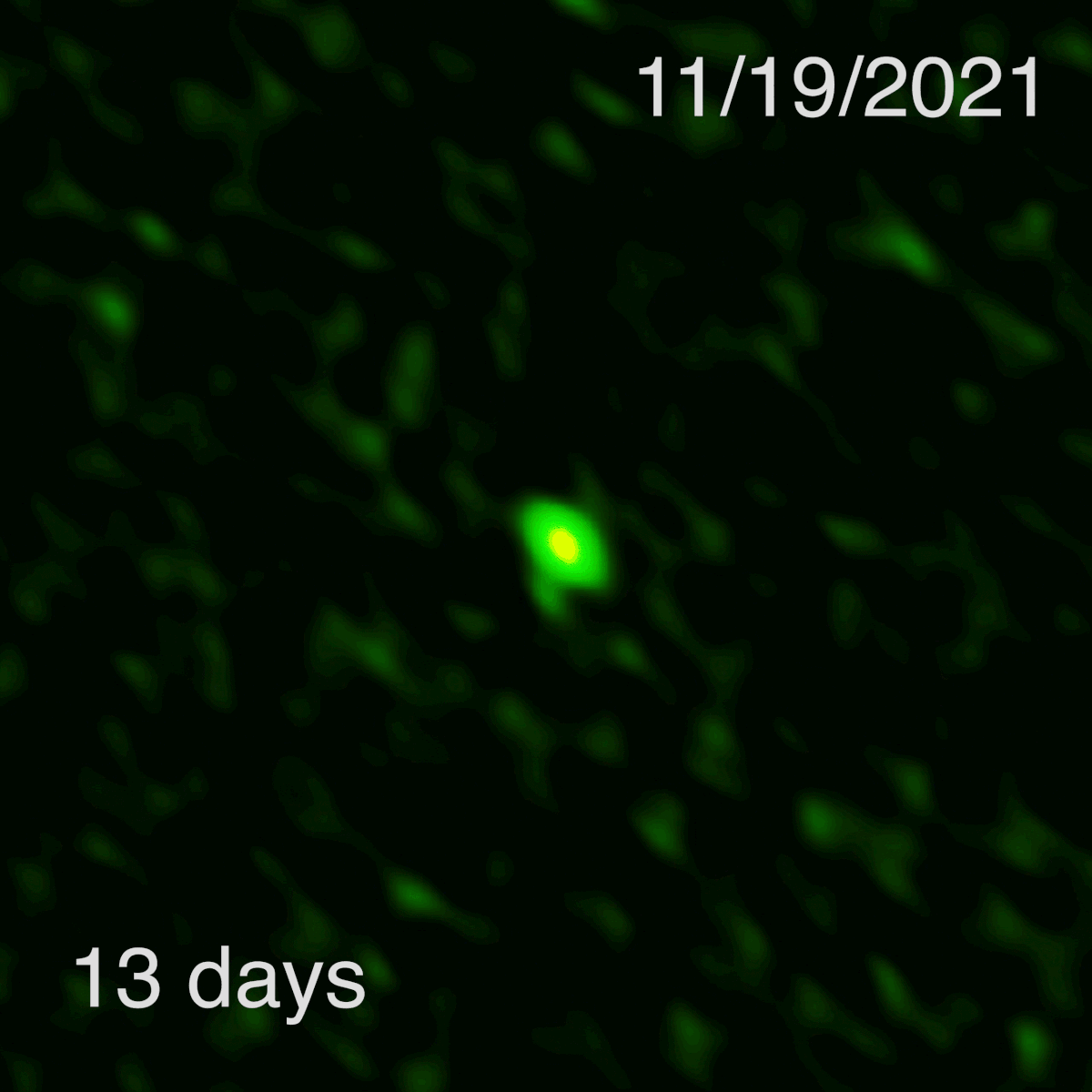Scientists Capture Footage of a Neutron Star Merger for the First Time

Scientists have, for the first time, recorded a millimeter-wavelength light explosion caused by the merging of a neutron star with another star.
Not only is this the first time that scientists have successfully recorded a neutron star merger, but the team also confirmed the resulting flash of light is one of the most energetic short-duration gamma-ray bursts ever observed, leaving behind one of the most luminous afterglows on record.
The team, led by Northwestern University and Radboud University in the Netherlands, used the Atacama Large Millimeter/Submillimeter Array (ALMA) to make the observation. Located in the Atacama Desert in Chile, the ALMA array is made up of 66 radio telescopes, making it the largest such telescope in the world.
“This short gamma-ray burst was the first time we tried to observe such an event with ALMA,” Northwestern’s Wen-fai Fong, principal investigator of the ALMA program, says.
“Afterglows for short bursts are very difficult to come by, so it was spectacular to catch this event shining so brightly. After many years observing these bursts, this surprising discovery opens up a new area of study, as it motivates us to observe many more of these with ALMA and other telescope arrays in the future.”
As the National Radio Astronomy Observatory (NRAO) explains, gamma-ray bursts (GRBs) are the brightest and most energetic explosions in the universe and are capable of expelling more energy in seconds than the Sun will emit during its entire lifetime.

Short-term GRBs tend to last fractions of a second and while they expel a ton of energy and leave an afterglow — an emission of light caused by the interaction of the jets with surrounding gas — they are still difficult to detect and less than half a dozen have ever been detected at radio wavelengths. Until now, none had been detected in millimeter wavelengths.
“Millimeter wavelengths can tell us about the density of the environment around the GRB,” Genevieve Schroeder, study co-author and graduate student in Fong’s research group, says.
“And, when combined with the X-rays, they can tell us about the true energy of the explosion. Because emission at millimeter wavelengths can be detected for a longer time than in X-rays, the millimeter emission also can be used to determine the width of the GRB jet.”
“What makes GRB 211106A so special is it’s not only the first short-duration GRB that we detected in this wavelength, but also, thanks to the millimeter and radio detection, we could measure the opening angle of the jet,” Rouco Escorial, study coauthor and postdoctoral fellow in CIERA, adds.
“The millimeter and radio bands provided us with information we needed to measure the jet opening angle. This is essential to infer the real rates of short GRBs in our universe and to compare them with the rates of binary neutron star or neutron star and black hole mergers.”
The explosion, called GR 211106A, that the scientists witnessed occurred when the Universe was still quite young: just 40% of its current age. As a result, the light from the explosion is incredibly faint.
“The light from this short-duration gamma-ray burst was so faint that while early X-ray observations with NASA’s Neil Gehrels Swift Observatory saw the explosion, the host galaxy was undetectable at that wavelength, and scientists weren’t able to determine exactly where the explosion was coming from,” the NRAO writes.
“Afterglow light is essential for figuring out which galaxy a burst comes from and for learning more about the burst itself. Initially, when only the X-ray counterpart had been discovered, astronomers thought that this burst might be coming from a nearby galaxy,” Tanmoy Laskar, who will soon commence work as an Assistant Professor of Physics and Astronomy at the University of Utah, says. and adds that a significant amount of dust in the area also obscured the object from detection in optical observations with the Hubble Space Telescope.
“The Hubble observations revealed an unchanging field of galaxies,” Laskar says. “ALMA’s unparalleled sensitivity allowed us to pinpoint the location of the GRB in that field with more precision, and it turned out to be in another faint galaxy, which is further away. That, in turn, means that this short-duration gamma-ray burst is even more powerful than we first thought, making it one of the most luminous and energetic on record.”
The full research report on the observation will be published in an upcoming edition of The Astrophysical Journal Letters.
Image credits: ALMA (ESO/NAOJ/NRAO), M. Weiss (NRAO/AUI/NSF)